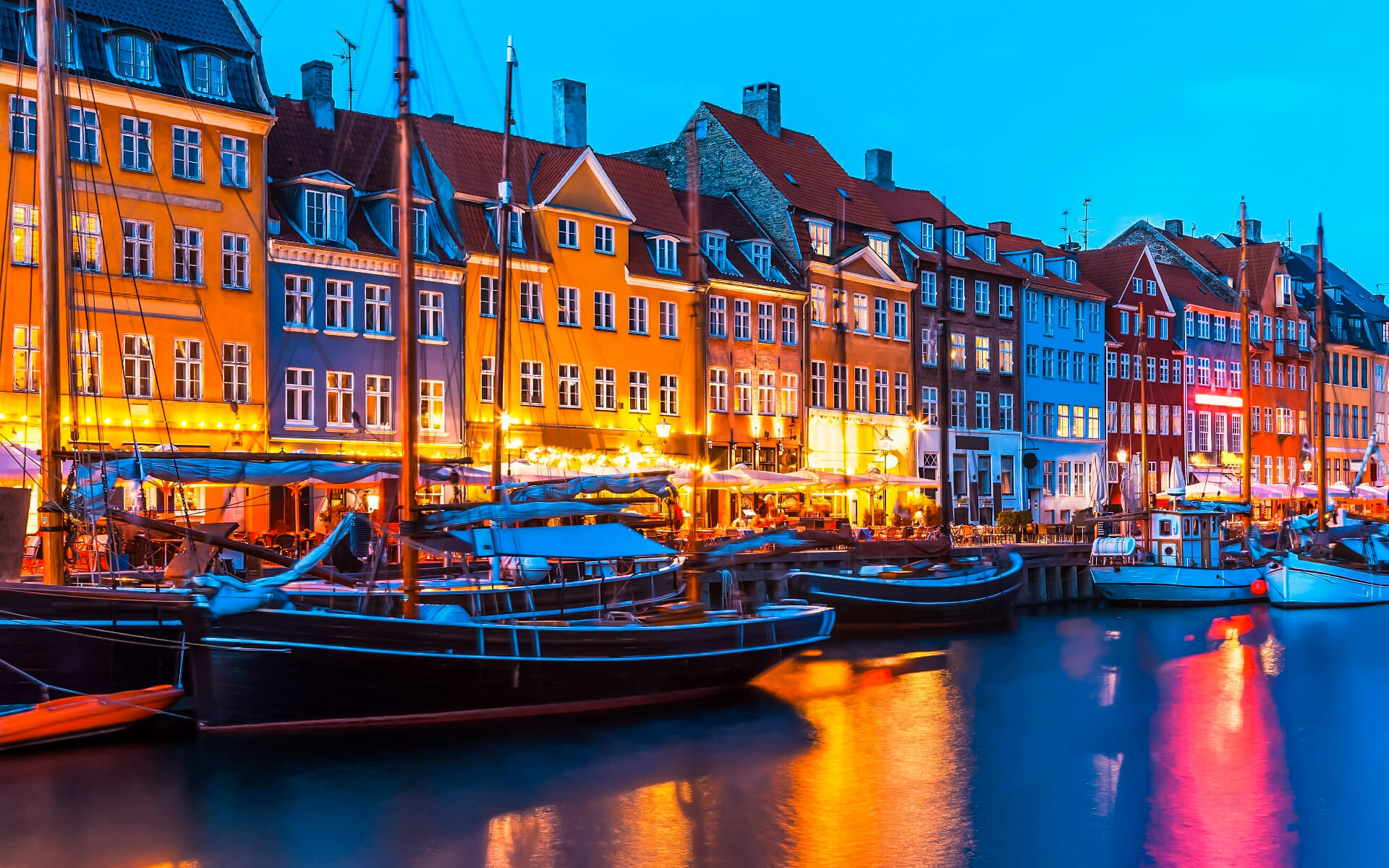Copenhagen is Denmark’s capital and most populous city. It has a municipal population of 591,481 people and a bigger urban population of 1,280,371 people (as of 1 January 2016). The Copenhagen metropolitan region has a population of somewhat more than 2 million people. The city is located on the eastern coast of Zealand; another tiny fraction of the city is located on Amager and is separated from Malmö, Sweden, by the strait of resund.
Copenhagen, which began as a Viking fishing hamlet in the 10th century, became the capital of Denmark in the early 15th century. With its institutions, defenses, and military forces, it solidified its position as a regional center of power beginning in the 17th century. Following the consequences of disease and fire in the 18th century, the city went through a period of rebuilding. This included the development of the prominent neighbourhood of Frederiksstaden as well as the establishment of cultural institutions such as the Royal Theatre and the Royal Academy of Fine Arts. Following more tragedies in the early nineteenth century, when Nelson assaulted the Dano-Norwegian navy and battered the city, restoration during the Danish Golden Age gave Copenhagen’s architecture a Neoclassical appearance. Following World War II, the Finger Plan encouraged the construction of homes and businesses along the five urban railway tracks radiating from the city center.
Copenhagen has seen rapid urban and cultural growth since the turn of the century, thanks to investments in its institutions and infrastructure. The city is Denmark’s cultural, economic, and administrative center, as well as one of Northern Europe’s main financial centers, with the Copenhagen Stock Exchange. The service sector has witnessed substantial growth in Copenhagen’s economy, particularly via projects in information technology, pharmaceuticals, and clean technology. Copenhagen has grown more connected with the Swedish province of Scania and its major city, Malmö, since the opening of the resund Bridge, establishing the resund Region. The cityscape is defined by parks, promenades, and waterfronts, which are linked by a number of bridges. Copenhagen’s icons include Tivoli Gardens, the Little Mermaid Statue, the Amalienborg and Christiansborg palaces, Rosenborg Castle Gardens, Frederik’s Church, and other museums, restaurants, and nightclubs.
The University of Copenhagen, the Technical University of Denmark, and Copenhagen Business School are all located in Copenhagen. The Institution of Copenhagen, established in 1479, is Denmark’s oldest university. Copenhagen is home to the football teams FC Kbenhavn and Brndby. The annual Copenhagen Marathon began in 1980. Copenhagen is one of the world’s most bicycle-friendly cities. The Copenhagen Metro serves downtown Copenhagen, while the S-train network connects the boroughs to the outskirts. Copenhagen Airport, Kastrup, is the biggest airport in the Nordic nations, serving around 2 million people every month.


